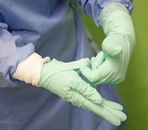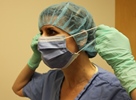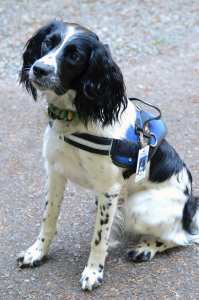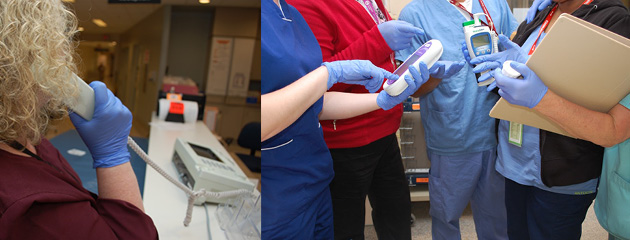Candida auris Alert
The US CDC and the Public Health Agency of Canada have recently raised an alert to an emerging multidrug-resistant (MDR) yeast, Candida auris (C. auris), that is causing potentially lethal, invasive infections in healthcare settings. Two countries have described healthcare outbreaks of C. auris, and analysis of these clusters suggest that C. auris is being transmitted within healthcare facilities.
No cases have been identified in Canada, but we are asking hospitals and health authorities to be on the alert for this emerging pathogen. This is to ensure that if a case is identified, the patient gets the proper testing and treatment, and is cared for in a manner that minimizes the risk of spread to others. Any suspect isolates from patient specimens should be sent to the BCCDC Public Health Laboratory for confirmation.
PICNet has prepared an infosheet that you can view as a web page or download the PDF, and a Q&A sheet you can refer to if you have questions from patients or other staff.
Provincial Infection Control Strategy
The Ministry of Health is working on a new provincial strategy for infection control. The decision to create a more forward-thinking, less reactive strategy, which will include the definition of high-level roles and responsibilities, was based on recommendations from the 2007 Auditor General’s report as well as lessons learned during the Ebola Virus Disease preparedness planning last year.
The Ministry of Health will be partnering with PICNet and the health authorities to develop this strategy, using a similar methodology as the provincial immunization strategy. This will involve a series of meetings with various stakeholders within all the health authorities to hear priorities, concerns, and suggestions for moving forward. An advisory group, yet to be appointment, will guide this project. The Ministry is currently working on a terms of reference and project plan.
All Hazards Training Framework

 The Ministry of Health has been working on a Health Care Worker All Hazard Personal Protection Training Framework. This document will define a provincial standard for health care worker training which:
The Ministry of Health has been working on a Health Care Worker All Hazard Personal Protection Training Framework. This document will define a provincial standard for health care worker training which:
- is safe and effective;
- is consistent across all health authorities;
- is defensible, achievable and sustainable; and
- recognizes resource implications.
These training standards will inform the provincial approach to acquiring PPE, and will be part of BC’s long-term strategy for novel pathogens, anticipatable pandemics, and other hazards. The document is now in the final approval stages.
Education Projects
PICNet’s new Education Steering Committee is busy with several projects:
- A provincially standardized set of precaution signs has been created, and finalized by almost all of the health authorities. You can view the new signs on the PICNet website; the signs will be rolled out this coming fall.
- PICNet’s Infection Control Basics online education module is being updated to include information from the new All Hazards Training Framework, and from other recent guidelines, toolkits, and developments in infection control. The Education Steering Committee is currently reviewing the existing module, and hopes to have the new module completed by the end of the year.
- Planning for the PICNet 2017 Educational Conference has begun. The feedback you provided in our recent surveys and conference evaluation will inform the choice of program topics. If you would like to suggest any new/additional topics or speakers, you can email Joanne Archer. And don’t forget to save the date: the conference takes place March 9-10, 2017.
 Infection Control News
Infection Control News
There are several new stories on the PICNet news page, including that of Angus the C.difficile-hunting dog. PICNet Medical Co-Lead Dr. Elizabeth Bryce was part of this project; you can watch her video interview and read the full story on The Vancouver Sun website.
Glove Use Contest
Congratulations to the winners of the “What’s wrong with this picture?” glove use contest, Elaine Eng of BC Emergency Health Services and Heather Axam of BC Genome Sciences Centre.
You can view all the photos and answers here. We have also added glove use information to our About Hand Hygiene page. If you think it would be helpful to have a one-pager on glove use for your staff, please let us know.

Upcoming Webinars
There are several upcoming webinars that may be of interest to you; they are listed on our Webinars and Lectures page. As these are hosted by other organizations, please contact those organizations to register, or if you have any questions.
There are also links to online archives of past webinars, including Jim Gauthier’s recent presentation Using a sporicidal disinfectant everywhere is not the solution to ongoing C. difficile transmission.
Webber Training: Upcoming Teleclasses
Behavioural and organizational determinants of successful IPAC interventions
Date: July 21st, 2016 Time: 10:30 am PST
Speaker: Dr. Enrique Castro-Sánchez, Imperial College London, England
Use of hypochlorite (bleach) in healthcare facilities
Date: August 18th, 2016 Time: 10:30 am PST
Speaker: Prof. William A. Rutala, University of North Carolina Hospitals
Applications and limitations of dipslides and PCR for real-time environmental contamination evaluation
Date: August 25th, 2016 Time: 10:30 am PST
Speaker: Dr. Tobias Ibfelt, Copenhagen University Hospital, Denmark
You can view the full schedule for upcoming months by clicking on “more teleclasses” on PICNet’s Webber Teleclass page.
Dial-in instructions
604-899-2339 or 1-877-385-4099
Pass Code: 7188720#
We also have some newly posted recordings on the Webber Archives page, including the recent sharps injury prevention teleclass (June 29th) that was not broadcast here.
